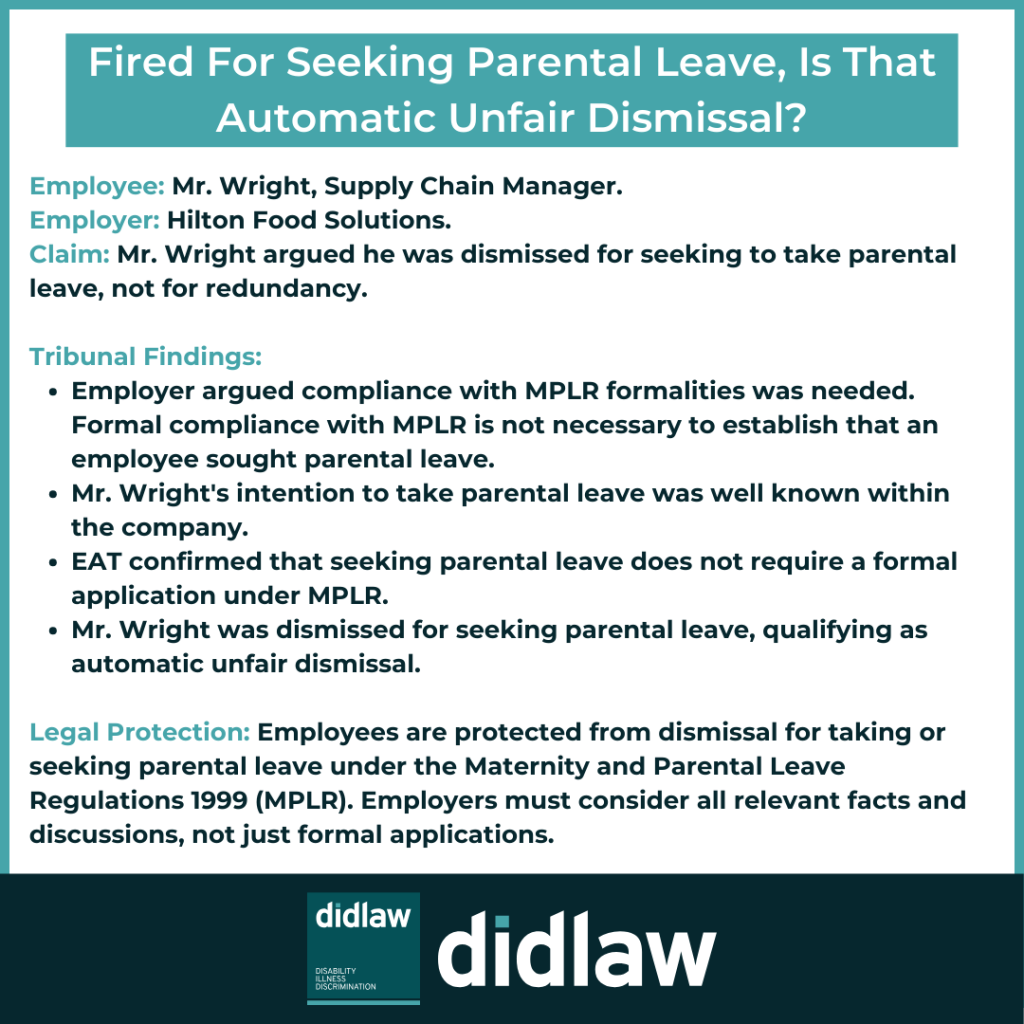
In Wright v Hilton Food Solutions the Employment Appeal Tribunal (EAT) was tasked with considering a first instance tribunal decision as to whether Mr Wright had ‘sought’ to take parental leave. An employee is protected from being dismissed because they take parental leave. This protection also applies when the employee ‘sought’ to take parental leave, i.e. it is anticipated and requested but has not yet happened.
The appeal before the EAT was limited to one point: what is required for an employee to show they have ‘sought’ to take parental leave?
In this case the employer said that the employee needed to have complied with the formal requirements of the Maternity and Parental Leave etc Regulations 1999 (the MPLR) as a prerequisite for exercising the right to take parental leave. The Claimant’s position was that the question of whether an employee has ‘sought’ to take parental leave is a question of fact for the ET to determine having considered all of the relevant evidence available.
The Claimant worked for the Respondent as a Supply Chain Manager until he was dismissed allegedly for redundancy. The Claimant argued that the real reason for dismissal was that he had sought to take parental leave. The Respondent applied to strike out the Claimant’s claim arguing he had not fulfilled the correct legal requirements to take parental leave. The Employment Tribunal (ET) did not strike out the claim and asserted that the Claimant’s failure to comply with the MLPR was not fatal to his case that he had sought to take parental leave.
The Claimant had provided substantial evidence that his desire to take parental leave was well known within the Respondent company even though he had not made a formal application. The parental leave discussions were ongoing at the time he was made redundant.
The Claimant’s case advanced and before the ET he argued that he was dismissed for the ‘reason, or principal reason, connected with the fact, that he had ‘sought’ to take parental leave.’ The company argued that the Claimant could not have ‘sought’ to take parental leave as he had not complied with the notice requirements as set out in the MPLR.
Neither the ET nor the EAT was persuaded by the Respondent’s argument. The EAT agreed with the ET and held that the Claimant could show that he had ‘sought’ to take parental leave without having needed to make a formal application. The determination of ‘sought’ here is reliant on the surrounding facts and discussions and are case specific.
The EAT was clear that an application under the MLPR was not the only evidence required to show that an employee had ‘sought’ to take parental leave. Mr Wright had been dismissed because he sought to take parental leave.
This blog was written by Elizabeth McGlone, Partner at didlaw.
